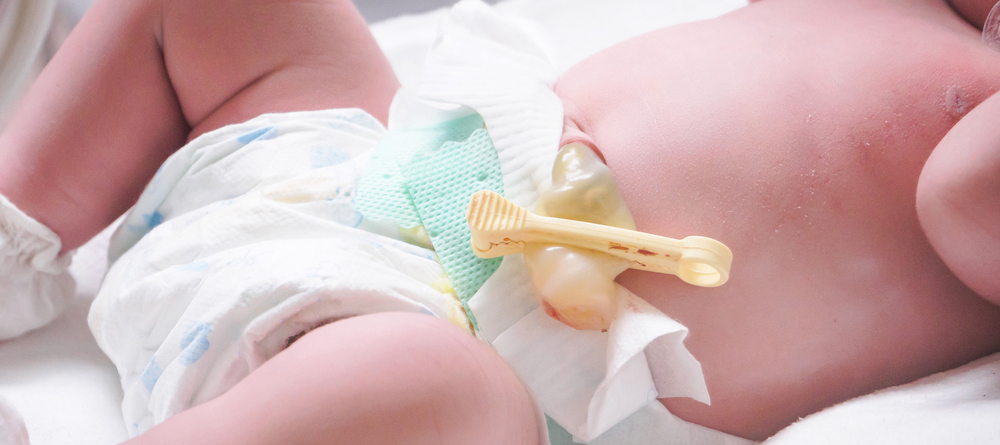Table of Contents
- Experienced Umbilical Cord Injury Attorney in Philadelphia, PA Seeks Maximum Compensation for Victims of Umbilical Cord Birth Injuries Due to Medical Negligence in Allegheny County, Philadelphia County, and Across Pennsylvania
- The Importance of the Umbilical Cord
- Umbilical Cord Errors Are Potentially Fatal
- Establishing a Doctor’s Negligence in an Umbilical Cord Error
- Negligence is The Basis of all Medical Malpractice Claims, Including Umbilical Cord Injuries
- Frequently Asked Questions About Umbilical Cord Injury Lawsuits in Philadelphia
Experienced Umbilical Cord Injury Attorney in Philadelphia, PA Seeks Maximum Compensation for Victims of Umbilical Cord Birth Injuries Due to Medical Negligence in Allegheny County, Philadelphia County, and Across Pennsylvania
At Baldwin Matzus, LLC, we understand that parents-to-be spend an enormous amount of time and energy learning about their developing baby. They do their best to learn quickly and ensure that the decisions made during the pregnancy maximize their chances to have a healthy child. All parents dream of a smooth and successful delivery followed by crossing the threshold of their home with a healthy, strong, and beautiful baby.
Medical professionals are trained to monitor the baby throughout pregnancy as well as during delivery in order to identify and monitor umbilical cord issues. When an umbilical cord complication is identified, it is their medical and legal obligation to act quickly to protect the baby from preventable harm. If a medical professional fails in these duties, and the baby suffers harm as a result, they may be held legally liable for the damages.
Contact Baldwin Matzus, LLC today for a free consultation about your umbilical cord injury case.
Injured and Have Questions? We Can Help. Tell Us What Happened. Call (866) 858-2276 Or Fill Out Our Convenient Online Contact Form.
The Importance of the Umbilical Cord
The critical lifeline connecting the mother and fetus
The umbilical cord connects the baby to the placenta in the mother’s womb, transporting oxygen and nutrients to the baby, and carrying away waste products, such as carbon dioxide. Still attached to the baby’s abdomen at birth, the umbilical cord is 0.5 to 0.75 inches in diameter, and approximately 20 inches long. The umbilical cord connects the mother’s body to the developing fetus, and has three primary functions: supplying oxygen, delivering nutrients and taking away depleted nutrients and carbon dioxide.
Because the umbilical cord is critical for the baby to receive adequate oxygen, it is important that no problems occur involving the umbilical cord during pregnancy, labor, and delivery.
Umbilical Cord Errors Are Potentially Fatal
Umbilical Cord Errors Damage the Fetus
Umbilical cord problems can occur during pregnancy and adversely affect the fetus. It is possible for the umbilical cord to get wrapped around the baby’s neck and prevent the necessary blood flow and oxygen to the baby.
Because of how dangerous an umbilical cord compilation can be, a pregnant mother’s obstetrician must closely and thoroughly listen to the fetal heartbeat every time there is a medical appointment during the pregnancy. In a case where the doctor has any concern that the umbilical cord might be entangled,the standard practice is to take an ultrasound.
The umbilical cord supplies the baby with oxygen and nutrients during pregnancy. Sometimes the umbilical cord can become compressed or damaged which can prevent oxygen from being delivered to the baby. A decreased flow of oxygen to the baby can be life-threatening or can result in cerebral palsy, hypoxic ischemic encephalopathy, and other profound injuries.

There are some common well-known cord-related pregnancy complications that compromise or restrict oxygen supply to the baby. They are:
1. Nuchal cord
This occurs when the cord is wrapped around the baby’s neck. This occurs pretty frequently. Approximately 15–35% of pregnancies involve a nuchal cord. Sometimes the cord issue resolves on its own without any intervention, other times it persists throughout labor and delivery. When the umbilical cord is wrapped around the baby’s neck it can be very dangerous because it can literally strangle the baby. Also, even if the cord isn’t wrapped around the baby’s neck, it can become compressed against itself or against the baby’s neck, and this too can restrict or limit normal oxygen delivery to the baby.
There are some well-known common risk factors for nuchal cord complications, including:
- A long umbilical cord length
- An especially active fetus
- Excessive amniotic fluid, referred to as polyhydramnios
- Multiple sharing in amniotic sac (cords of twins or other multiple births may become tangled around their own necks or their sibling’s necks)
Some early warning signs or early nuchal cord are when a baby’s movements slow after 37 weeks or if there is a decreased fetal heart rate.
2. Cord prolapse
In a normal delivery, the baby exits the mother before the umbilical cord. In an umbilical cord prolapse, the umbilical cord slips ahead of the fetus and moves into the cervical canal, vagina, or comes out of the birth canal before the baby. This is a medical emergency because there is a strong chance that the umbilical cord will be compressed, blocking oxygen and blood flow to the baby. In a cord prolapse case, an emergency cesarean section is often necessary.
Umbilical cord complications are less rare than we once believed.
According to the Cleveland Clinic, 1 in every 300 births involves umbilical cord prolapse, while up to 29% of all births involve a nuchal cord issue.
Establishing a Doctor’s Negligence in an Umbilical Cord Error
When any of these medical emergencies occur, a doctor has mere seconds to unwrap the umbilical cord or order an emergency cesarean section before oxygen deprivation occurs.
Tragically, many umbilical cord complications go unnoticed and aren’t given the timely attention they deserve. An umbilical cord error can dramatically decrease oxygen and restrict blood flow to the baby. The outcome of any type of umbilical cord problem can be serious, including seizures, brain damage, paralysis, and even death.
A baby’s life can forever change due to a doctor’s negligence in failing to attend to the umbilical cord problem. As a result, a baby may suffer physical impairments, cognitive problems, and behavioral issues. If a doctor failed to recognize an umbilical cord problem or failed to act quickly, medical malpractice may be behind your baby’s birth injury.
Find Out What Your Case is Worth. Call (866) 858-2276 Or Fill Out Our Online Contact Form For a Free Consultation.
Negligence is The Basis of all Medical Malpractice Claims, Including Umbilical Cord Injuries
At Baldwin Matzus, LLC, we counsel our clients that in order to bring any valid medical malpractice case, it is not enough to identify that something went wrong and caused the infant’s injury. The mishap must have been due to the medical negligence of a doctor, nurse, midwife, or caregiver.
The following legal elements must always be established to show that a medical professional was negligent:
- The medical professional had a standard of care to uphold during the procedure. The standard of care is the level of care and skill that is expected of the medical professional. The law looks at what a medical professional with similar training would have done in the same or similar situation. An obstetrician is trained in medical school and in their practical training to recognize problems with the infant’s status in the womb. Any doctor responsible during the birth of the child is expected to act quickly when the delivery of the baby becomes dangerous.
- The medical professional failed to uphold the standard. Whether by action or inaction, a doctor or other medical professional performs below the standard of care and skill expected of them. This is a crucial point. The medical professional is not only responsible when they act, but also when they fail to act but the standard of care dictates that they should have. This includes failure to other tests or procedures in time.
- The medical professional’s failure caused harm to the infant. There has to be a demonstrable connection between the doctor’s failure to act according to the prescribed standard of care and the umbilical cord injury sustained by the baby. If there is no causal link between the two, there is no legal case. Similarly, if the umbilical cord injury was unavoidable, there is also no legal case. Only where the injury was preventable if the medical professional adhered to the standard of care will there be the grounds for a legal case.
Frequently Asked Questions About Umbilical Cord Injury Lawsuits in Philadelphia
Can Umbilical Cord Prolapse be the result of medical malpractice?
Yes. We regularly work on behalf of clients who did not receive adequate care and monitoring during pregnancy or delivery and suffered a preventable umbilical cord complication resulting in the injury or death of a child,
Less rare than we think. According to the Cleveland Clinic, 1 in every 300 births involves umbilical cord prolapse, while up to 29% of all births involve a nuchal cord issue.
When a medical professional makes an umbilical cord error and causes a birth injury in the child, the result can be grief, pain and suffering, and a lifetime of serious medical issues ahead. When a medical professional acts in a negligent manner or fails to act when they should have, Baldwin Matzus, LLC can help you get the compensation you legally deserve.
Nuchal cords are often diagnosed by looking at ultrasound images which may be able to show if the cord is wrapped around the baby’s neck.
Sometimes, nuchal cords can be fixed by having a doctor reach into the birth canal to maneuver the cord so that it is no longer wrapped around the baby’s neck. However, if the cord is wrapped too tightly to do that, an emergency C-section may be necessary.
In a normal vaginal birth, the baby exits the cervix first and the umbilical cord follows the baby down the birth canal. Umbilical prolapse is a condition that occurs when the cord emerges before or alongside the baby. This is a very dangerous condition because the cord can easily become compressed between the baby’s body and the birth canal restricting or cutting off oxygen supply to the baby.
Some common risk factors for cord prolapse include:
1. Premature rupture of the membranes (if the mother’s water breaks too early, when the baby is still positioned high in the uterus, the umbilical cord may move into the birth canal first before the baby can descend)
2. Long umbilical cord length
3. Low birth weight
4. Maternal pelvic deformities
5. A breech presentation or other abnormal presentation
6. A low-lying placenta
7. Prolonged labor or premature delivery
The clearest and most obvious sign of cord prolapse is when the cord emerges from the birth canal before the baby. However, this does not always happen as the cord can come down the birth canal alongside the baby. Thus, doctors and nurses need to pay particular attention for signs of fetal distress, such as heart rate deceleration, as an early warning sign or clue regarding the possibility of a cord prolapse situation.

















